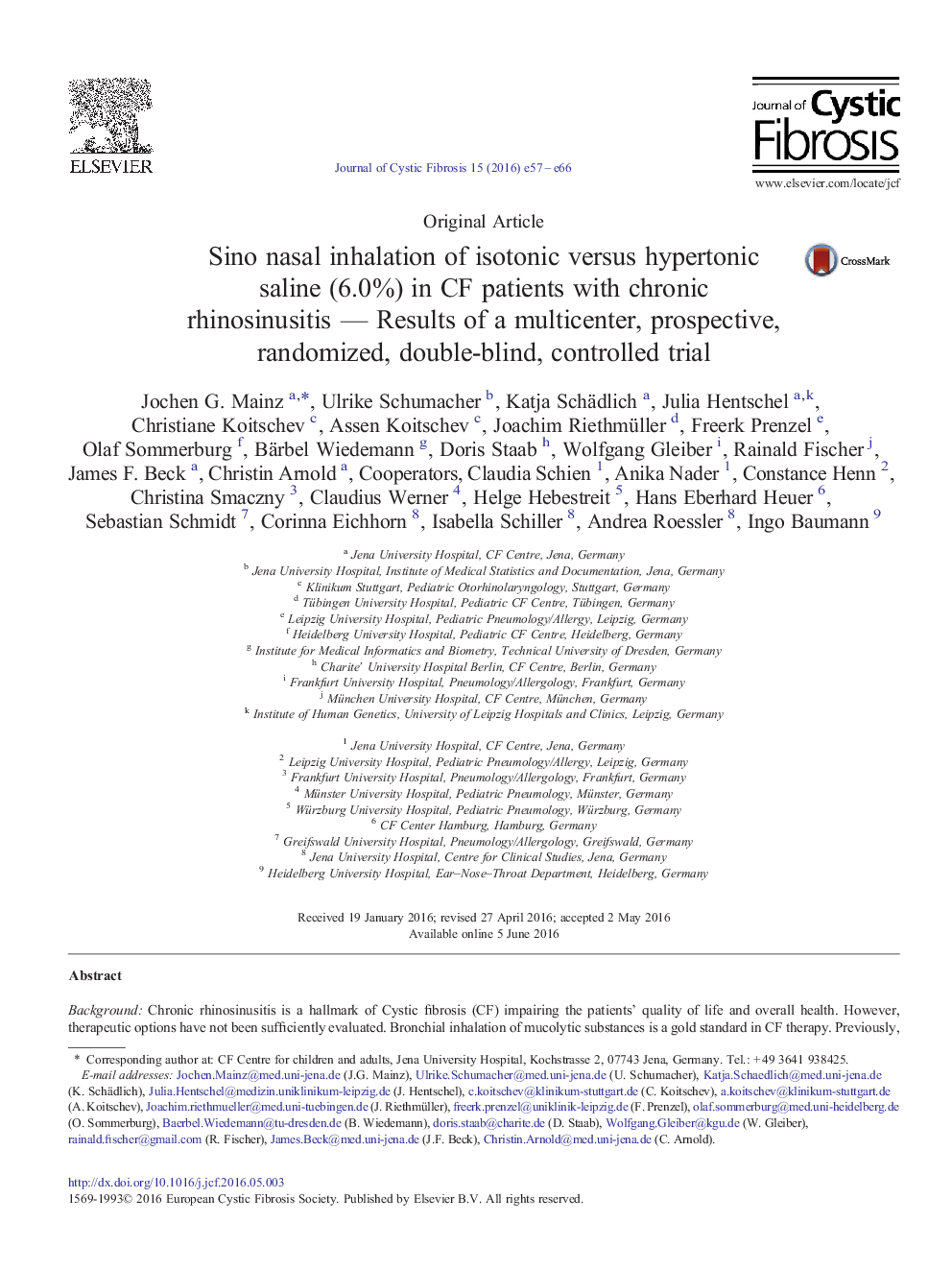| کد مقاله | کد نشریه | سال انتشار | مقاله انگلیسی | نسخه تمام متن |
|---|---|---|---|---|
| 5724582 | 1411501 | 2016 | 10 صفحه PDF | دانلود رایگان |
BackgroundChronic rhinosinusitis is a hallmark of Cystic fibrosis (CF) impairing the patients' quality of life and overall health. However, therapeutic options have not been sufficiently evaluated. Bronchial inhalation of mucolytic substances is a gold standard in CF therapy. Previously, we found that sinonasal inhalation of dornase alfa as vibrating aerosol reduces symptoms of chronic rhinosinusitis more effectively than NaCl 0.9% (net treatment benefit: â 5.87 ± 2.3 points, p = 0.017; SNOT-20 total score). This multicenter study compares the effect of NaCl 6.0% vs. NaCl 0.9% following the protocol from our preceding study with dornase alfa.MethodsSixty nine CF patients with chronic rhinosinusitis in eleven German CF centers were randomized to receive sinonasal vibrating inhalation of either NaCl 6.0% or NaCl 0.9% for 28 days. After 28 days of wash-out, patients crossed over to the alternative treatment. The primary outcome parameter was symptom score in the disease-specific quality of life Sino-Nasal Outcome Test-20 (SNOT-20). Additionally, pulmonary function was assessed, as well as rhinomanometry and inflammatory markers in nasal lavage (neutrophil elastase, interleukin (IL)-1β, IL-6, and IL-8) in a subgroup.ResultsBoth therapeutic arms were well tolerated and showed slight improvements in SNOT-20 total scores (NaCl 6.0%: â 3.1 ± 6.5 points, NaCl 0.9%: â 5.1 ± 8.3 points, ns).In both treatment groups, changes of inflammatory parameters in nasal lavage from day 1 to day 29 were not significant. We suppose that the irritating properties of NaCl 6.0% reduced the suitability of the SNOT-20 scores as an outcome parameter. Alternative primary outcome parameters such as MR-imaging or the quantity of sinonasal secretions mobilized with both saline concentrations were, however, not feasible.ConclusionSinonasal inhalation with NaCl 6.0% did not lead to superior results vs. NaCl 0.9%, whereas dornase alfa had been significantly more effective than NaCl 0.9%.
Journal: Journal of Cystic Fibrosis - Volume 15, Issue 6, November 2016, Pages e57-e66
